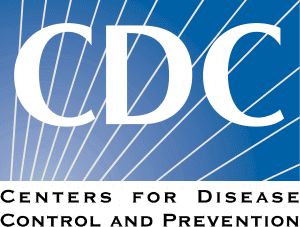- Co-infection of SARS‐CoV‐2 and Influenza A/B among Patients with COVID-19: A Systematic Review and Meta-analysis
These are the results of a meta- analysis that included 38 primary studies investigating co-infection of SARS-CoV-2 with influenza in confirmed cases of COVID-19. The analysis found that the prevalence of influenza in co-infected patients at 95% confidence interval using a random effect model was 14% (95% CI: 8–20%). Forest plots so you can see all the studies. - Oseltamivir Reduces 30-Day Mortality in Older Adults with Influenza: A Pooled Analysis from the 2012-2019 Serious Outcomes Surveillance (SOS) Network of the Canadian Immunization Research Network (CIRN)
Among the 8,135 influenza patients studied, 2,126 did not receive antiviral treatment, whereas 6,009 were treated with oseltamivir. Oseltamivir recipients had a 18% lower risk of 30-day mortality (IPT-weighted HR=0.82, 95% CI: 0.69-0.98). The benefit was significant for influenza A (IPT-weighted HR=0.74, 95% CI: 0.61-0.91) but not for influenza B (IPT-weighted HR=1.12, 95% CI: 0.81-1.56). Oseltamivir remained effective even when initiated after 48 hours (IPT-weighted HR=0.66, 95% CI: 0.49-0.90). Influenza vaccination did not mediate the effectiveness of oseltamivir in reducing mortality.
- Long COVID Prevalence and Associated Activity Limitation in U.S. Children
This used data from the 2023 National Health Interview Survey (NHIS), a nationally representative cross-sectional household survey of civilian noninstitutionalized U.S. populations. For the NHIS, one child aged 0 to 17 years is randomly selected from each sample household, and their parent or guardian provides responses to interviewer-administered questionnaires. The 2023 sample child response rate was 44.9%. Overall in 2023, 1.4% of children surveyed had ever experienced Long-COVID symptoms and 0.4% were currently experiencing Long-COVID symptoms at the time of the survey. Prevalence of Long-COVID symptoms was associated with older age (12 to 17 years, 2.3%; 95% confidence interval [CI], 1.7% to 2.9%). - Plasma Proteomic Evidence for Increased β-amyloid Pathology after SARS-CoV-2 Infection
Previous studies have suggested that systemic viral infections may increase risks of dementia. We do not know if this is true for infections with the severe acute respiratory syndrome coronavirus 2 (SARS-CoV-2). This group measured plasma biomarkers linked to Alzheimer’s disease pathology in the UK Biobank before and after serology-confirmed SARS-CoV-2 infections. SARS-CoV-2 infection was associated with biomarkers associated with β-amyloid pathology: reduced plasma Aβ42:Aβ40 ratio and, in more vulnerable participants, lower plasma Aβ42 and higher plasma pTau-181. The plasma biomarker changes were greater in participants who had been hospitalized with COVID-19 or had reported hypertension previously. They showed that the changes in biomarkers were linked to brain structural imaging patterns associated with Alzheimer’s disease, lower cognitive test scores and poorer overall health evaluations. Data from this post hoc case–control matched study provides observational biomarker evidence that SARS-CoV-2 infection may be associated with greater brain β-amyloid pathology in older adults.
Situation Dashboards

World Health Organization (WHO)
Novel Coronavirus (COVID-19) Situation from World Health Organization (WHO)

Johns Hopkins University (JHU)
Coronavirus COVID-19 Global Cases by the Center for Systems Science and Engineering (CSSE) at JHU

COVID-19 in US and Canada
1Point3Acres Real-Time Coronavirus (COVID-19) Updates in US and Canada with Credible Sources

Genomic Epidemiology COVID-19
Genomic Epidemiology of (COVID-19) Maintained by the Nextstrain team, enabled by data from GISAID.






